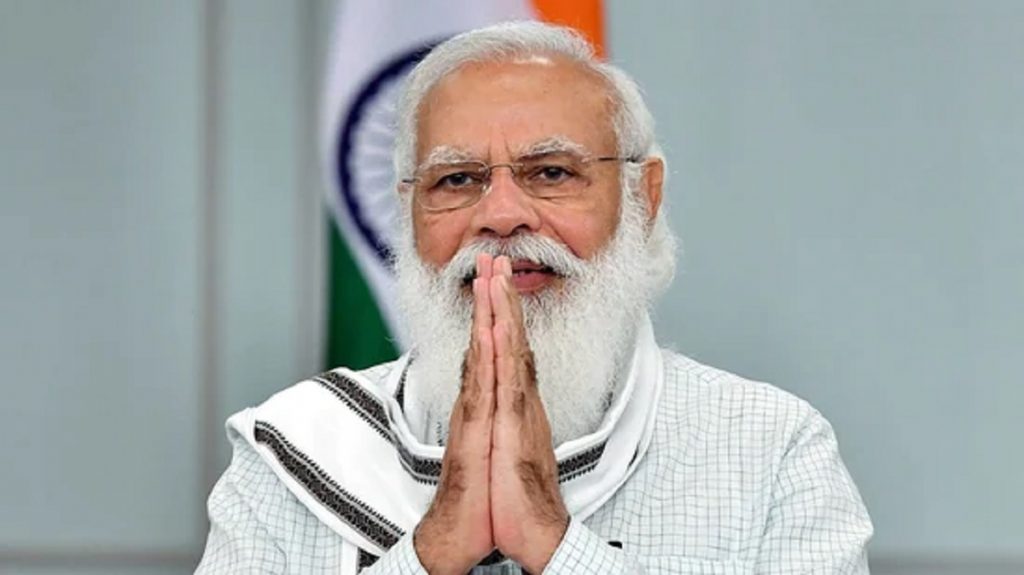By Dr. Gyan Pathak
By the decision of the Centre to cut interest rate on workers’ and employees’ PF deposits, Modi government has just pushed workers 45 years back on social security at a time when the working class needed it most due to rising price rise and inflation with additional financial crises they have been facing for the last two years especially since the COVID-19 pandemic struck the country. The action to effect a cut on social security measures is sharply in contrast with the magnanimous speeches of our leadership to protect workers’ interests.
The yearly inflation has been projected to 5.3 per cent and interest rates on PF deposits has been reduced to 8.1 per cent, and therefore the effective gain for workers will be only 2.8 per cent yearly on their deposits. Though the workers and employees are entitled to dearness allowance, and many of them have been getting it, many others have just lost their jobs during the pandemic. For out of job workers, and the workers who are re-employed on lower wages, likely to be the hardest hit by the present decision of reducing interest rates on PF deposits, and hence it is inhuman.
Employees Provident Fund is one of the social security schemes being implemented in India under Employees’ Provident Fund Scheme 1952 along with Employees’ Pension Scheme 1995. Both the schemes are retirement saving schemes under Employees’ Provident Funds and Miscellaneous Provisions Act, 1952, meant for salaried employees. The workers who spend the prime and most productive time as workforce building and protecting the nation ensuring smile on the faces of the citizens deserved such social protection and much more in the old age after spending their whole life working for us. Their meagre deposits are their only hope for surviving with dignity, and therefore, interest rate cut will make them more miserable, which make us thankless in return for their life-time work. Whoever sees PF and Pension merely welfare schemes are therefore wrong, and cut in interest rate on their deposit is a cruel selfish return to the workforce.
Since the Union Minister for Labour and Employment Bhupendra Yadav, who is PM Narendra Modi’s top lieutenant for implementing the biggest labour reform in India vigorously pushing for implementation of the four controversial labour codes, presided over the meeting of the Employees’ Provident Fund Organisation’s (EPFO’s) top decision making body the Central Board of Trustees that approved the rate cut on March 12, 2022, it has unmasked the real face of the Modi government. Since the action is clearly against the workforce, the allegations of anti-worker and pro-corporate labelled against Modi government is too difficult to disbelieve.
The action is even astounding in the backdrop of the four labour codes that the Modi government is bent upon implement in the coming year 2022-23, one of which is the Code on Social Security, 2020, whose expressed objective is to amend and consolidate the existing labour law relating to social security with the wider goal of extending social security benefits to all employees and workers irrespective of belonging to organised and unorganised sector. The question is what benefit the workers will get after interest rate cut on their provident fund deposits? It is shocking that Modi government should resort to such a cruel act against workforce under cover of high sounding names of schemes such as Pradhan Mantri Shram Yogi Mandhan (PM-SYM) or National Pension Scheme for Traders and Self Employed Person, at a time when the entire workforce in the country are undergoing an unprecedented crisis needing greater social security cover. Even the draft central rules on the Code on Social Security, 2020 mentions widening the ESI and PF schemes for entire workforce in the country, and more recently registration facility have been provided on e-shram portal linking both. It means the teeth to eat are different than the tusks to show.
The new approved rate of interest on PF deposit is 8.1 per cent for the financial year 2021-22 as against the last two financial years 2020-21 and 1019-20 when it stood at 8.5 per cent, thus making the interest rate the lowest since 1977-78 when it stood at 8 per cent. In 2015-16 the rate of interest was 8.8 per cent, which was highest 12 per cent between 1989 and 2000. The amount calculated on the new rate will be credited on EPF accumulations in members’ accounts for the financial year 2021-22, after the approved rate would be officially notified in the government gazette. It should also be noted that the Central Board of Trustees is the apex decision making body of the EPFO, which is a tripartite body involving the government, workers, and employers’ representative, but it is well known that it decides whatever the Central government want to. AITUC General Secretary Amarjeet Kaur said, “All employee representatives in the Central Board of Trustees demanded continuation of 8.5 percent.”
It is ‘black initiative’, criticized Mamata Banerjee the Chief Minister of West Bengal, while slamming the Centre’s decision to slash interest rate on employees’ PF deposits. “This is amidst the pandemic-hit financial stresses of middle and lower-middle-class workers and employees.” And she was not incorrect. She rightly said that it must be thwarted by united protests. Central trade unions and several other leaders from opposition parties have also condemned the move. The All India Trade Union Congress (AITUC) called for widespread protest against this during the all-India strike on March 28 and March 29, 2022. AITUC argued that reducing the interest rate amounts to reducing the protection offered by PF accumulations in old age. This will affect all senior citizens who depend on the interest on their savings to support themselves. AITUC has also rejected the so-called actuarial calculations put forth by the Ministry to justify the reduced interest rate, which favours big players in financial market and corporate, about which Union labour minister Bhupendra Yadav was quoted saying “it feels good to announce” 8.1 per cent interest rate on EPF savings for 2021-22. (IPA Service)

 Anti-Muslim Sentiment Among Sizeable Hindus Is BJP’s Trump Card In Polls
Anti-Muslim Sentiment Among Sizeable Hindus Is BJP’s Trump Card In Polls 